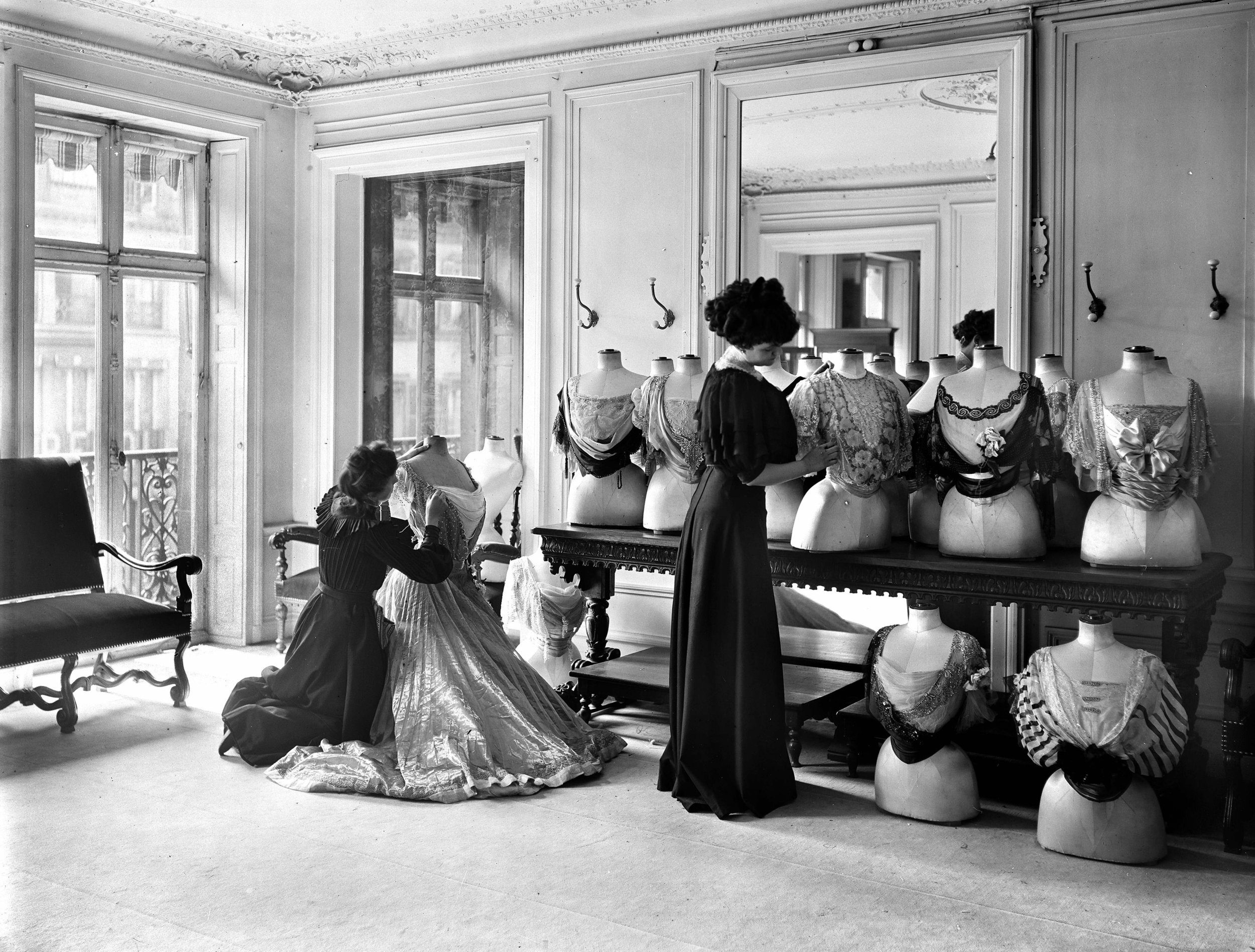Paris Haute Couture - An Exhibition

Haute Couture was born in Paris in the middle of the 19th century, and since then generations of couturiers have transformed a discipline once deemed frivolous into high art, spreading the influence of Parisian chic and creative savoir fair around the world. Like Champagne, the term Haute Couture is legally protected and fashion houses must fulfil a set of strict criteria to receive the appellation, ranging from the number of “petites-mains” employed in house (qualified workers such as dressmakers, embroiderers, plumassiers) to the use of a certain surface area of fabric.
“Paris Haute Couture,” now on view at the Salle Saint-Jean of the Hôtel de Ville, retraces over 100 years of this unique French savoir-faire with 80 creations on loan from the collection of the Musée Galliera, the Musée Galliera and 20 others from Swarovski, the free exhibition’s sponsor.
Daniel Swarovski started to closely work with haute couture designers in the early 1900s, first with Charles Frederick Worth, who used his crystals to embroider his dresses, then with other renowned couturiers such as Jeanne Lanvin, Gabrielle Chanel, and Elsa Schiaparelli.
While couturiers in the 1920s used crystals modestly, by the 1950s the use of such embellishment in haute couture had become more extravagant under the direction of Jacques Fath, Cristóbal Balenciaga and Christian Dior. Indeed in 1956, Swarovski created the Aurore Boreale Crystal at the demand of Dior, who was seeking a specific colour.
Upon entry, a series of films retrace the history of haute couture, with drawings and photographs further allowing visitors to slip behind the scenes of fashion houses and discover these works of art, from conception to completion.
Among the most important historical dresses are Commedia dell'Arte, which Elsa Schiaparelli created just before the start of WWII, Christian Dior's crystal- and pearl-embroidered Palmyre gown from 1952, and a celluloid creation — considered to be the first of its kind — by Jeanne Lanvin.
The exhibition draws parallels between these great designers from the past to present-day masters, for example Paul Poiret and Christian Lacroix, who shared a penchant for certain motifs. Another similarity can been seen between a 1920s Poiret coat and patterns designed by John Galliano for Dior in 1998.
One highlight of the exhibition is the inclusion of the sixties and its pop influences, such as Paco Rabanne's use of metal, and the beautifully short Target Dress by Pierre Cardin. One can also see contemporary designers such as Jean Paul Gaultier and his bomber jackets, as well as a tribute to Maison Martin Margiela, which was added to the official haute couture calendar last year.
“Paris Haute Couture” runs until July 6 at the Salle Saint-Jean of the Hôtel de Ville






